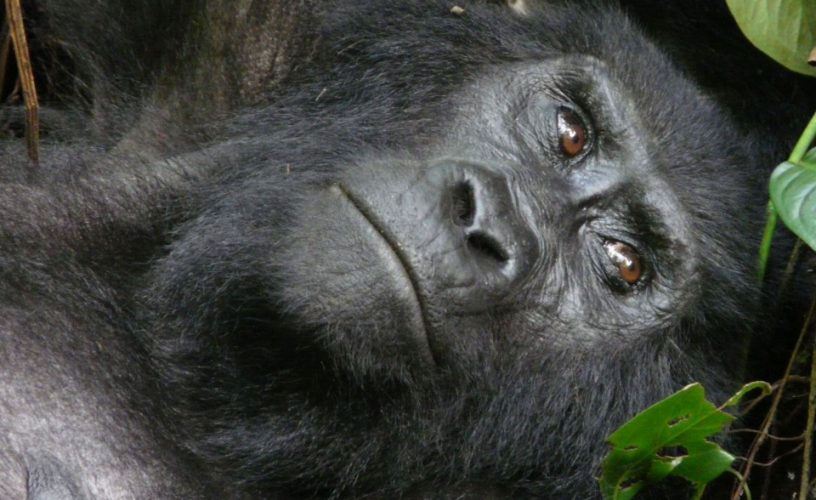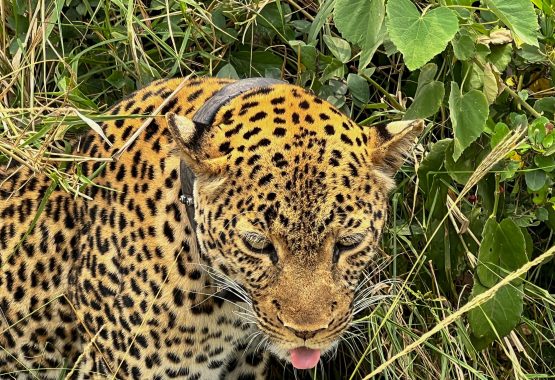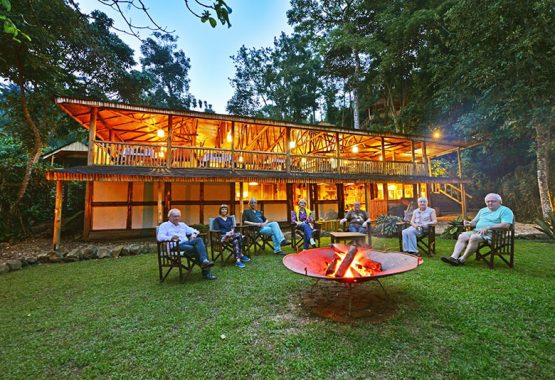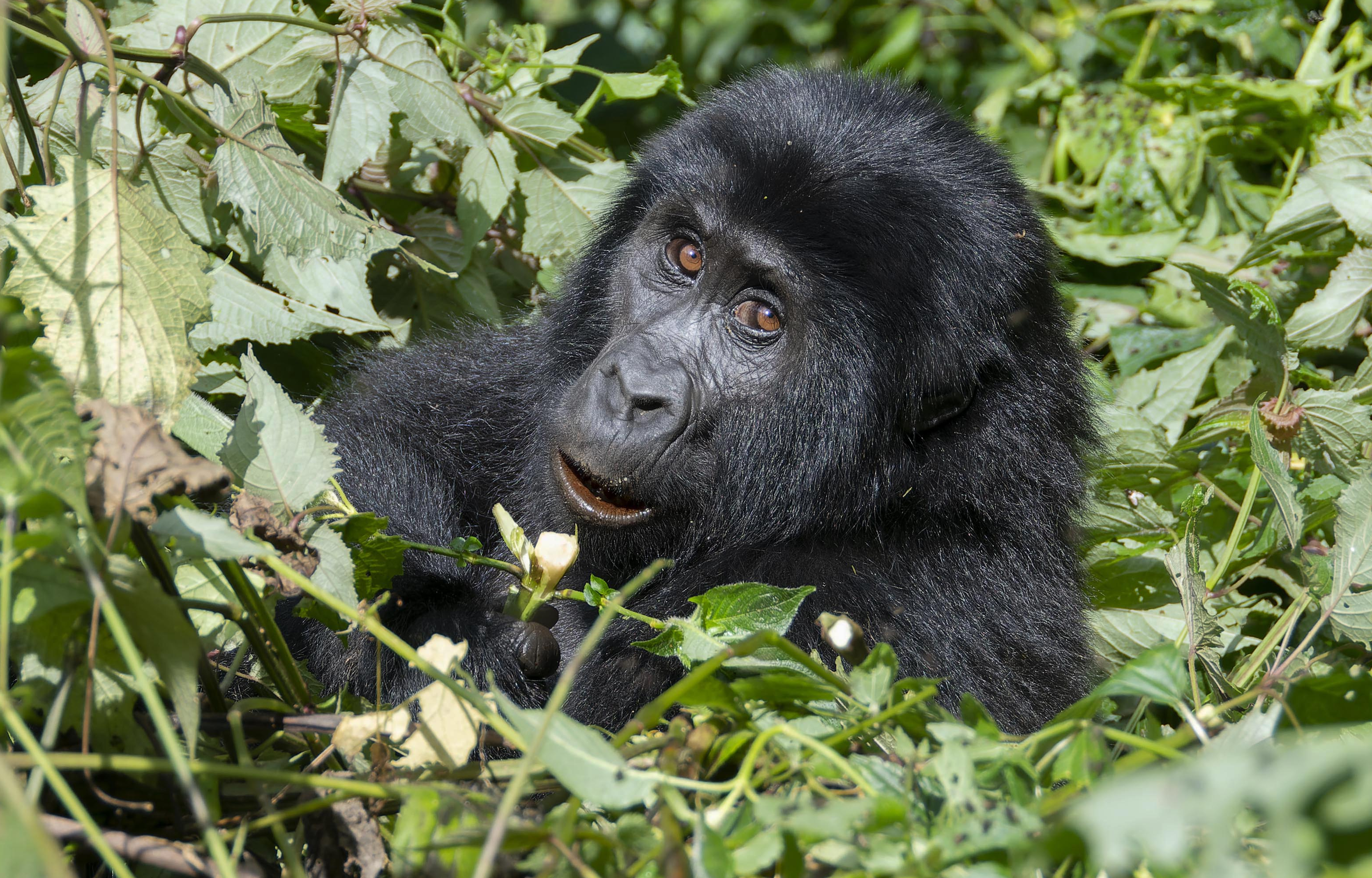A small group of mothers were quietly playing with their fuzzy-furred babies in the dappled light of a forest clearing. None of the group appeared to take the slightest bit of notice of the clumsy tourists and park rangers who’d tramped nosily up to the apes as a part of a gorilla habituation safari. But then a large silverback male rumbled onto the scene. He appeared to be annoyed, and immediately the calm atmosphere among the female and baby gorillas changed. Mothers glanced at the approaching male and pulled their babes closer to them. Suddenly, the male thumped his fists hard into the ground, stood tall on his back legs and raced towards the human intruders while beating his chest.
A Gorilla Habituation Adventure
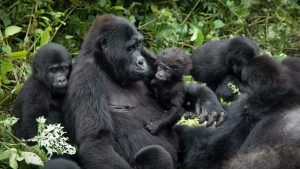
As the silverback came thundering towards us, my heart skipped several beats, and I froze to the spot. The rangers accompanying us, though, had clearly seen it all before and merely grinned in excitement as the gorilla came to a crashing halt a metre away from them. As the silverback slumped back down onto all fours and plodded back to his females, the head ranger turned and said, “The gorillas can tell the difference between tourists and rangers. They know that it is rangers who disturb them when they are sleeping or feeding. They think that tourists are very docile. If gorillas charge, they normally just run straight past the tourists and go for the rangers. It’s normally just a mock charge to show who is boss.”
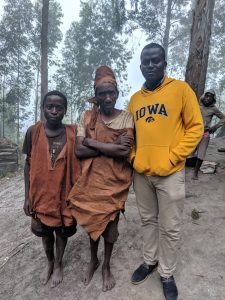 I was part of a group of three tourists taking part in a Mountain Gorilla Habituation Experience deep inside Uganda’s Bwindi Impenetrable National Park. To get to this safari moment, we had walked up steep mountain slopes through a tangled undergrowth of giant stinging nettles and weeds that clasped at ankles and legs. Eventually, though, we’d got our first sight of a mountain gorilla. It was a juvenile female clowning about in the lower branches of a tree. Quickly afterwards other gorillas became visible. Some were clearly uncertain about this rude human intrusion, and they tucked themselves up into the darker shadows. Others in the group were unfazed by our presence and allowed us to approach within a few metres of them.
I was part of a group of three tourists taking part in a Mountain Gorilla Habituation Experience deep inside Uganda’s Bwindi Impenetrable National Park. To get to this safari moment, we had walked up steep mountain slopes through a tangled undergrowth of giant stinging nettles and weeds that clasped at ankles and legs. Eventually, though, we’d got our first sight of a mountain gorilla. It was a juvenile female clowning about in the lower branches of a tree. Quickly afterwards other gorillas became visible. Some were clearly uncertain about this rude human intrusion, and they tucked themselves up into the darker shadows. Others in the group were unfazed by our presence and allowed us to approach within a few metres of them.
“Habituating gorillas to human presence is a painstakingly slow process,” the guide whispered as the excitement of the charge faded away. “At first we see them only very fleetingly from a distance. The rangers have to act like gorillas. They pick leaves and pretend to eat them. This is so that the gorillas get interested and come and see what is happening. This is done every day for about a year and slowly, slowly the distance between rangers and gorillas reduces as the gorillas get more used to the presence of the rangers. After a year, we start to allow tourists to visit. This is done so that the gorillas get used to new faces, white skin and cameras. After two years, they are usually close to properly habituated and they allow people to approach very close. This might sound like a long time, but compared to chimpanzees, which can take ten years to habituate, it’s a very fast process.”
What is a Gorilla Habituation Experience?
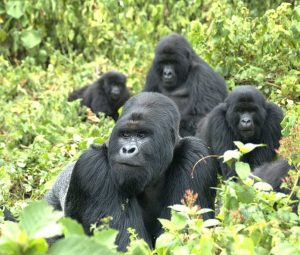 In the standard Uganda gorilla trekking tours, the apes have been receiving human visitors for years, and they’re so well habituated to our presence that they literally regard you as just another forest object. This means that they will often look right through you and barge you out of the way if you don’t move fast enough when they approach. At times, the experience can almost feel a little too ‘zoo-like’. A gorilla habituation experience is different. The gorillas, visitors are taken to see, are normally only halfway through the habituation process, and some members of the group will very much keep their distance. So this begs the question. Why sign up for it? Well, two big reasons stand out. Firstly, unlike on a standard gorilla visit, where your time with the apes is limited to one hour, you get four hours with the gorillas. Secondly, up to eight tourists (plus guides and rangers) are permitted to visit each gorilla group in a normal gorilla watching visit, but on a habituation experience, only four tourists are allowed. This provides a more intimate experience.
In the standard Uganda gorilla trekking tours, the apes have been receiving human visitors for years, and they’re so well habituated to our presence that they literally regard you as just another forest object. This means that they will often look right through you and barge you out of the way if you don’t move fast enough when they approach. At times, the experience can almost feel a little too ‘zoo-like’. A gorilla habituation experience is different. The gorillas, visitors are taken to see, are normally only halfway through the habituation process, and some members of the group will very much keep their distance. So this begs the question. Why sign up for it? Well, two big reasons stand out. Firstly, unlike on a standard gorilla visit, where your time with the apes is limited to one hour, you get four hours with the gorillas. Secondly, up to eight tourists (plus guides and rangers) are permitted to visit each gorilla group in a normal gorilla watching visit, but on a habituation experience, only four tourists are allowed. This provides a more intimate experience.

